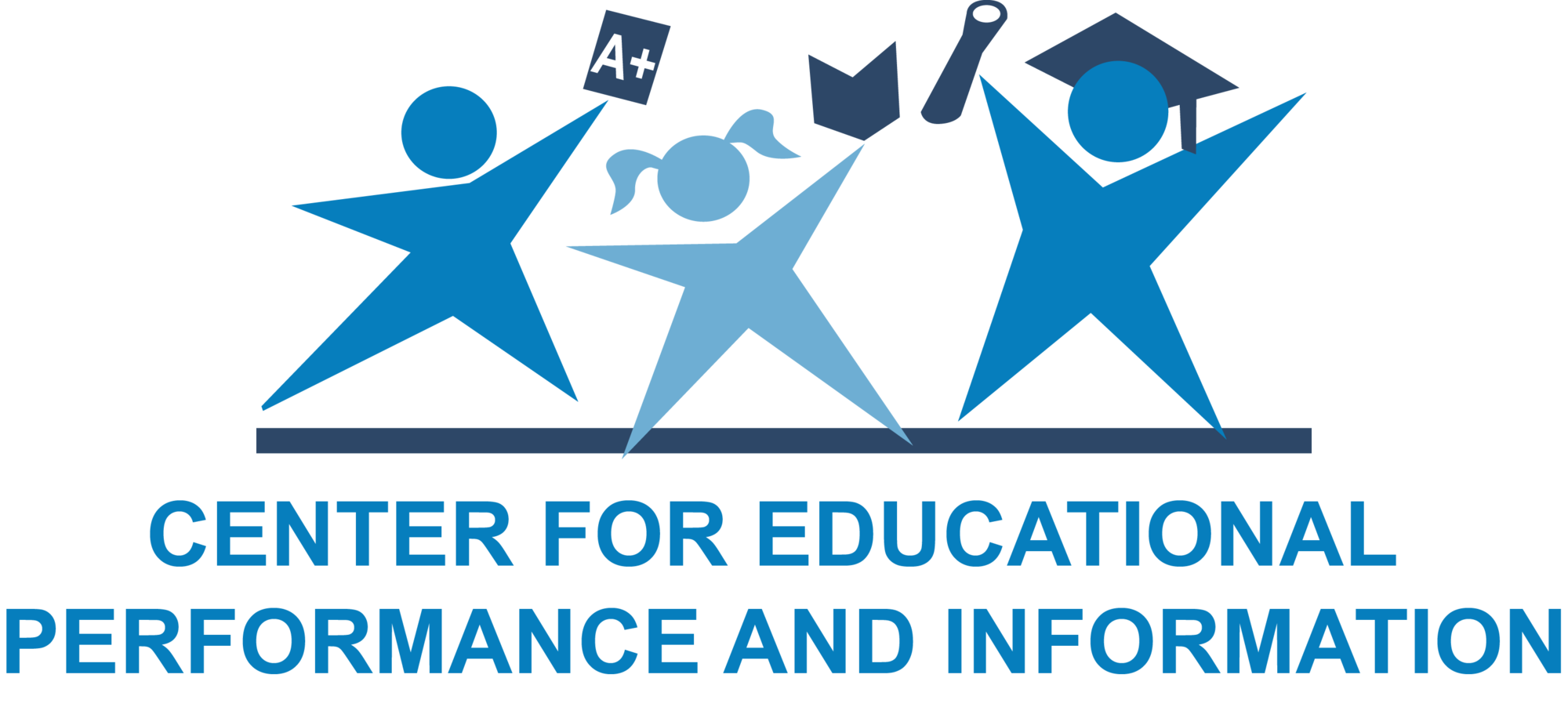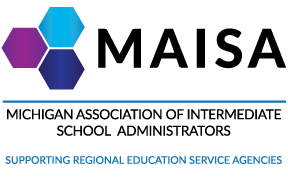April 2022 MICIP Continuous Communication
Michigan Department of Education sent this bulletin at 04/07/2022 01:54 PM EDT |
|
Having trouble viewing this email? View it as a Web page. |
In the April 2022 Issue of Continuous Communication
In this jam-packed issue of MICIP Continuous Communication, read about the 2022 Collaboration Series, Program Evaluation in MICIP, an opportunity to submit a RFP for the Fall 2022 Continuous Improvement Conference, Feedback from participants in the Collaboration Series, a new Data Set Template, the third installment on MICIP and Social Emotional Learning, and much more!
MDE MICIP Collaboration Series 2022
Building on the four-part collaboration series offered by MDE last year (2021), the MICIP Collaboration Series 2022 was again a resounding success, as evidenced by the feedback regarding participant understanding of MICIP prior to and following attending the series.
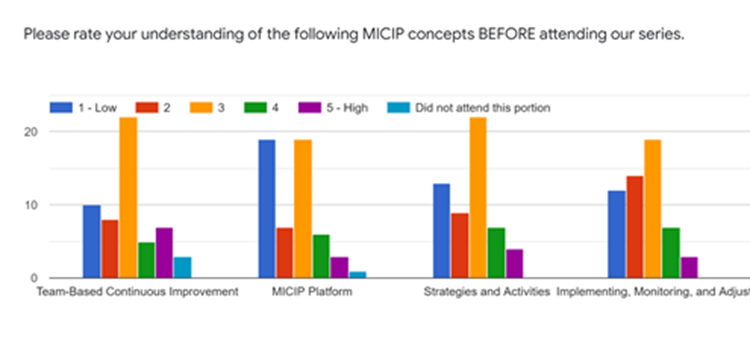
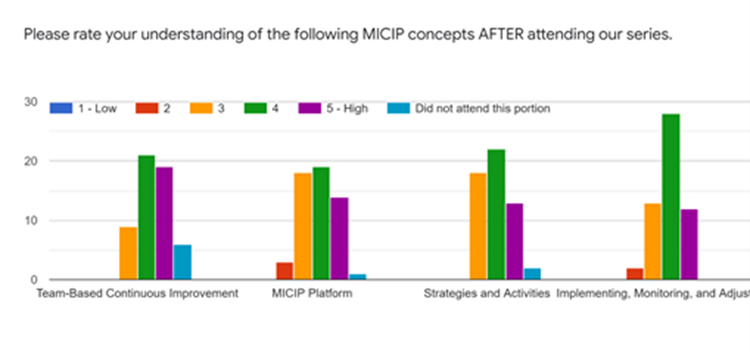
The Collaboration Series provided numerous practical resources and guidance in addressing the variation in the readiness and capacity for districts across the state to engage in continuous improvement work.
This year’s series provided plenty of new content while at the same time honoring where districts might be at in their own continuous improvement journey. Districts attended as whole or partial teams while others attended as individuals. .
Attendees were grouped appropriately to allow each to collectively share and brainstorm ideas and challenges with each other to further move forward in their continuous improvement journey.
Series topics were as follows:
- Session 1 – Continuous Improvement 101 - This session reviewed the 2021 collaboration series and the available tools and resources to support the continuous improvement work.
- Session 2 – Strategies and Activities - This session focused on strategies and activities and the basics of the MiStrategyBank.
- Session 3 - Monitoring and Adjusting - This session focused on what should be monitored and adjusted in a district plan.
-
Session 4 - Facilitated Work Time and Team Coaching - Based on participant feedback, this session provided participants the choice to work in their own district teams and/or attend one-hour breakouts that focused on the following topics:
- Equity in Continuous Improvement
- Help! I’m Brand New!
- Small District Round Table
- Digging Deeper into Strategies and Monitoring
MDE would like to acknowledge Dave Hundt (Muskegon ISD), Hilda Irani (Dearborn Public Schools), Frank Holes (Allegan ESA), and Mike Fine (Ottawa ISD) for their time and effort in creating and facilitating the MICIP Collaboration Series.
 Where is Program Evaluation in MICIP?
Where is Program Evaluation in MICIP?
In accordance with federal requirements, districts are required to determine the impact of all programs paid with federal funds. Evaluation of these programs that are part of plans in MICIP will be done through the monitoring and evaluation sections.
Evaluation of programs that are part of plans not currently in MICIP will need to use a tool of the district’s choosing.
To monitor the progress on a strategy and/or activity, the district would click on the monitor button associated with a goal in the district’s portfolio. It is important that district continuous improvement teams meet regularly to discuss strategies and activities as part of the continuous improvement cycle.
Using the Create a Note function, teams can capture their discussions along with adding evidence. When determining progress, there are three areas of a strategy to reflect upon – fidelity, scale/reach, and capacity. Teams can decide if they will discuss all three or select a single area for that meeting’s discussion. Program evaluation is the accumulation of the monitoring notes over time.
A district can create a report under the Portfolio Report feature in the navigation bar starting the first of May 2022.
To evaluate the impact of a goal, the district would click on the evaluate button associated with a goal in the district’s portfolio. Here all interim and end target measures must be marked as complete.
Using the impact tool, teams review and summarize progress in all four areas – fidelity, scale/reach, capacity, and impact.
There are options to add further evidence in addition to the interim and end target measures. A district can create a report using the same process as mentioned above.
For further information, please contact Michael Powell, Assistant Director in Office of Educational Supports (PowellM12@michigan.gov).
 Reminder
Reminder
Districts who have a change in leadership should contact Renie Araoz (araoza@michigan.gov) to update their MICIP district administrators. Please note that a district maintains its district user access and MDE manages the district administrators.
Fall 2022 Continuous Improvement Conference:
Request for Presentations now available
Under the theme, Continuous Improvement: Providing Connectedness, Safety, and A Sense of Belonging in Today’s World, the Fall 2022 Continuous Improvement Conference will take place on Tuesday, October 18, currently planned for the Lansing Center.
Attendees will be able to hear a presentation by a soon-to-be-announced keynote speaker as well as to participate in three breakout sessions. Breakouts will be recorded, and those who attend in person will have access to all recordings for ninety days following the conference.
Those not wishing to attend in person will have the option of purchasing access just to the recordings.
Conference RFP applications are now available. Please consider whether you might have something to share that addresses the theme.
MICIP User Group
The next MICIP User Group will meet on Monday, April 11, from 1:00—2:00 pm when we hope to focus on the continuous improvement requirements for the next two years.
Connecting information is as follows:
- https://us06web.zoom.us/j/82632776295?pwd=RVd0eDdOVnlKNnZDTVFyeWRVMDlhQT09 (note change from previous link)
- Meeting ID: 826 3277 6295
- Passcode: mUZc3E
The meetings are being recorded and are available to attendees following each session at the MICIP User Group Dashboard. The final date for this school year will be Monday, May 9, from 1:00 – 2:00 pm. Please contact Ben Boerkoel with any questions.
Voices from the Field
At the conclusion of each of the Collaboration Series Sessions, participants were asked to identify what takeaways they plan to take back to their district team.
One participant said,
"When a flower doesn't bloom, you fix the environment in which it grows, not the flower."
A representative sample of all responses is below.
- Keep the number of strategies and activities manageable. Fewer strategies, more activities.
- Focus on systems and broad system goals.
- Don’t skimp on team development; even though it takes time, you will benefit from it in the long run.
- To get the most complete picture possible, it’s important to include a broad range of data in your data story. It’s more important to have a broad range than many data objects in each category.
- We need to focus on student and system assets as well as on the needs.
- It’s important to hear the voices of the stakeholders about who we are collecting data.
- Identifying the root cause is a critical part of the assess needs process. The combination of the fishbone and 5 whys for identifying the root cause is powerful.
- Clearly define the roles of the district team and the building teams. Make sure team members understand the relationship between the two. The MICIP District-Led Continuous Improvement Toolkit was really helpful.
- Use protocols to facilitate the process.
- Moving from compliance to authenticity is the key.
- The Hexagon Tool is so powerful and can be used in so many ways in the MICIP, including to evaluate both current and potential activities. The MDE Toolkit on Evaluating Current and New Initiatives and Strategies is a terrific resource.
- Having a strategy implementation guide is critical for fidelity of implementation.
- Begin monitoring as soon as you start implementing.
- Shifting language around equity from othering to belonging; for example, using “marginalized” and “minoritized” rather than “sub-groups.”
- The importance of doing self-monitoring along with external monitoring.
- Don’t be afraid to deselect what isn’t working.
- Make your plan be about the work you are actually doing.
- Not everything you are doing has to go into your plan.
- Focus on quality conversations rather than on checking boxes. Much of the continuous improvement work takes place during the conversations that happen outside of MICIP rather than what gets put into the platform.
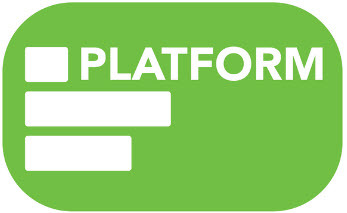 Release 1.9.4
Release 1.9.4
On Thursday, March 10, the MICIP platform was upgraded to include fixes within the backend of the code. These changes are not visible to the users other than making MICIP work more efficiently. There was one visual bug where you will see the improvement – the persistence of data from text boxes when adding evidence to Impact Tool.
 New Data Set Template
New Data Set Template
Check out the new data set template entitled, “Essential Cybersecurity Practices” in the MICIP platform.
The guiding question for this data set is:
“How well are schools implementing MTSS, and is the district providing adequate support to schools?”
Thank you to the METL Cybersecurity Task Force for this submission.
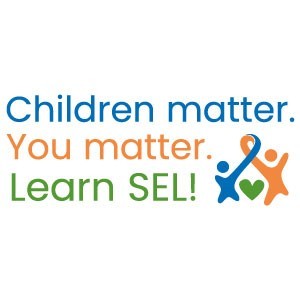 MICIP and Social Emotional Learning
MICIP and Social Emotional Learning
This is the third in a multi-part series on MICIP and Social Emotional Learning Competencies and focuses on the Planning Process.
Because Social Emotional Learning is a Tier 1, universal strategy, the Collaborative for Academic and Social Emotional Learning (CASEL) recommends implementing the five competences district wide. District efforts to adopt Social Emotional Learning may find the use of the CASEL District Rubric helpful.
An overlap exists between this resource and the MICIP Activity Planning Tool. The Tool helps districts identify possible activities for each implementation stage.
The four sections of the Planning Tool (installation, implementation, monitor/adjust, and evaluation) are listed below with a brief explanation of how the CASEL rubric and other resources aid the planning process.
- Installation - Focal Area 1 of the CASEL district wide rubric guides a team through the readiness, competency, and infrastructure questions of the planning tool. The This section helps teams review their human and fiscal resources, the district’s vision and mission, and the district’s capacity for Social Emotional Learning knowledge and skills. The other three focal areas of the rubric address adult SEL, student impact, and Social Emotional Learning related continuous improvement efforts.
- Implementation - Knowing what the Social Emotional Learning ‘look fors’ are can be complex without an observation tool that the district team can use. CASEL offers a walk-through observation tool that can help each building in the district support Social Emotional Learning practice.
- Monitor/Adjust - In addition to using the rubric and the information collected through the walkthrough protocol, a practitioner self-assessment can be found in the MDE guidance document entitled, Connecting Social and Emotional Learning to Michigan’s School Improvement Framework. Within Appendices C and D, teachers can review their own Social Emotional Learning proficiency. Finally, Social Emotional Learning formative assessments can assist teachers in adjusting instruction to assure that student impact is realized.
- Evaluation - Since measuring implementation and impact can be a challenging task for any team, using the MiStrategy Bank to select a Social Emotional Learning evidence-based program (EBPs) might ease the process of knowing what works. The district's choice to pick a program that meets the criteria of an EBP means that the program will come with tools to determine the quality of both implementation and student impact. The MDE Social Emotional Learning team populated the strategy bank with programs that meet the United States Department of Education standards for being evidence-based.
The MDE SEL team has customized the CASEL rubric for Michigan. Email Leisa Gallagher (gallagherl@michigan.gov) or Amy Wassmann (wassmanna1@michigan.gov) for an electronic copy.
Please share Continuous Communication
Please feel free to forward Continuous Communication to anyone you feel would like to receive information and updates about MICIP. To subscribe or unsubscribe, please click on this link.
Previous issues of MICIP Continuous Communication are available on the MICIP web page.
Feedback is Essential for Continuous Communication!
Have a question, an idea, a suggestion, or a compliment? The MICIP team is always eager to hear your feedback! Send us an email using the MICIP email address (MDE-MICIP@michigan.gov)


